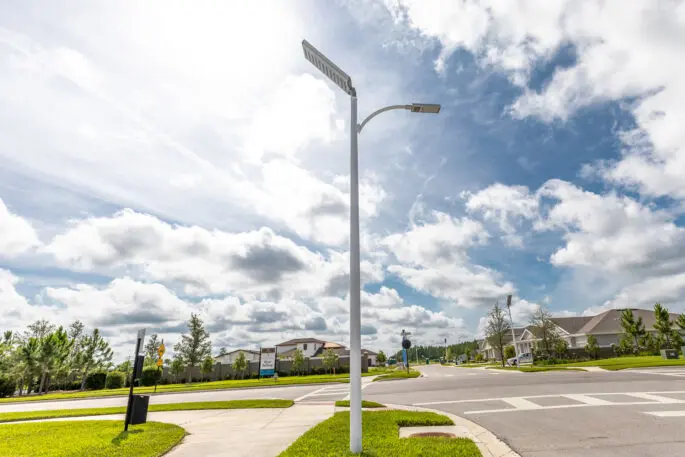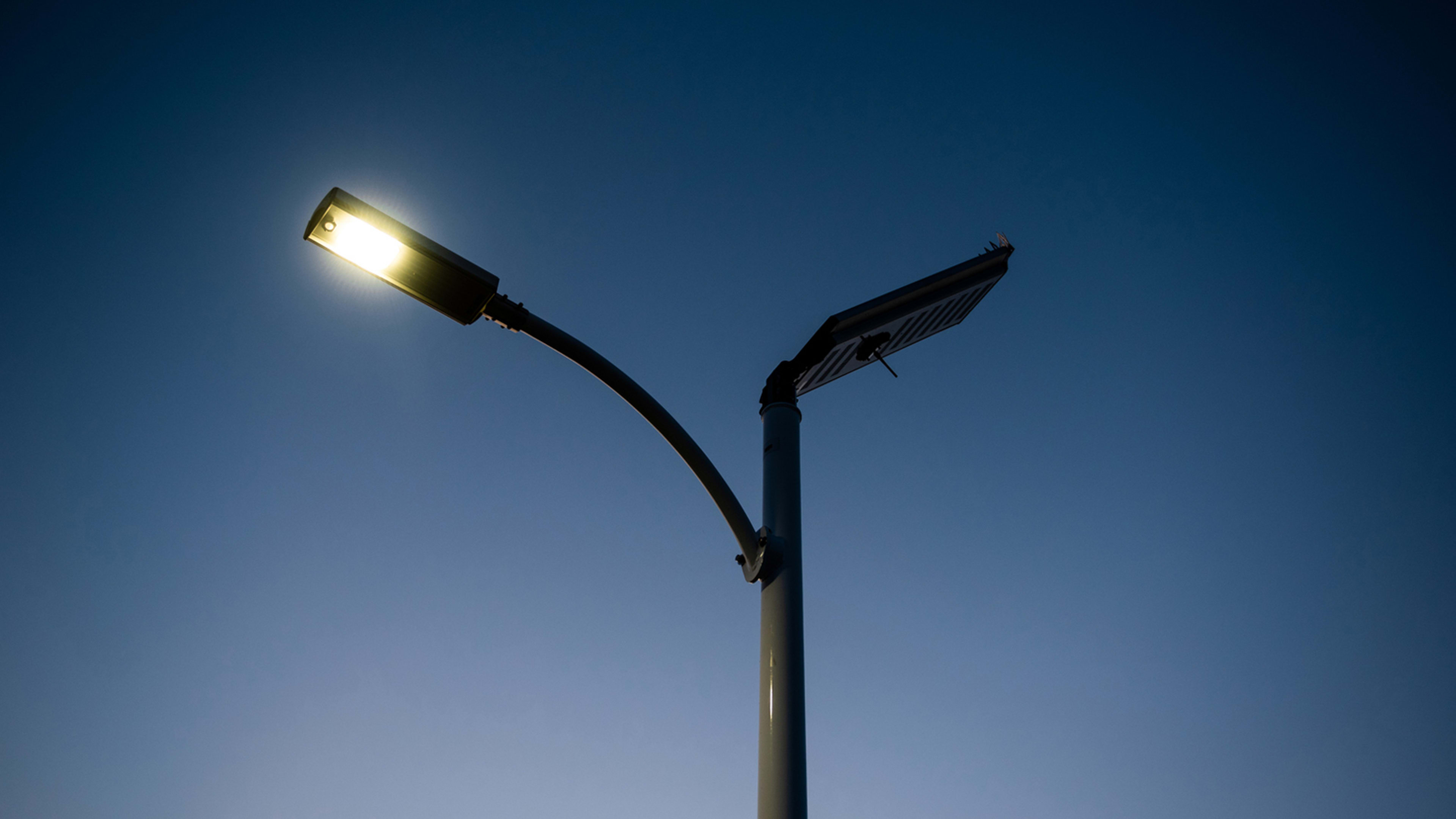When Hurricane Ian hit Florida last year, the power was out in parts of North Fort Myers for five days. But each night, the streetlights came on in one neighborhood in the city. The area, a new development with hundreds of homes over 11 blocks, is among a growing number of communities to have lights that run on solar power, independent from the grid.
“They stayed on the entire time, even when the community was in darkness,” says Liam Ryan, a manager at Streetleaf, the company that makes the lights. A mesh network connects to all the lights so that they can be monitored and slightly dimmed if it’s necessary to extend the battery life on cloudy days.

The startup spun out of a development company that wanted to install solar streetlights in a project but couldn’t find good options on the market. “We talked to other solar light companies and found that most of them were what we call integrators—they’re just buying a solar panel, a car battery, and a pole,” Ryan says. “Nobody had done hundreds or thousands of installs at a time.”

The company decided to develop its own version, using high-efficiency solar panels, efficient LEDs, batteries, smart sensors that can adjust the light based on the natural light outside and traffic, and software that allows for remote monitoring and control. The lights are also designed to reduce light pollution for wildlife, such as migrating birds, and for people living nearby.

For a new development, it can be cheaper to install solar lights than typical lights tied to the electric grid because it’s possible to avoid the expense of new wiring. Installation of Streetleaf’s lights takes around 15 minutes. Because they aren’t connected to the grid, they can also run directly on DC power—the energy that solar panels produce and normally has to be converted before it can run an appliance—making them able to produce more light with less power. The current design is optimized for sunny climates, though with a larger battery, it could work nearly anywhere, Ryan says.
Over the past few years, the startup has installed more than 4,500 of its lights. So far, all the installations have been in new developments, but Ryan is hopeful that eventually cities will agree to replace existing streetlights as well. Over time, the energy savings can offset the cost. “Our goal,” Ryan says, “is to have every streetlight in the U.S. be solar-powered.”
Recognize your brand’s excellence by applying to this year’s Brands That Matter Awards before the final deadline, June 7.
Sign up for Brands That Matter notifications here.
